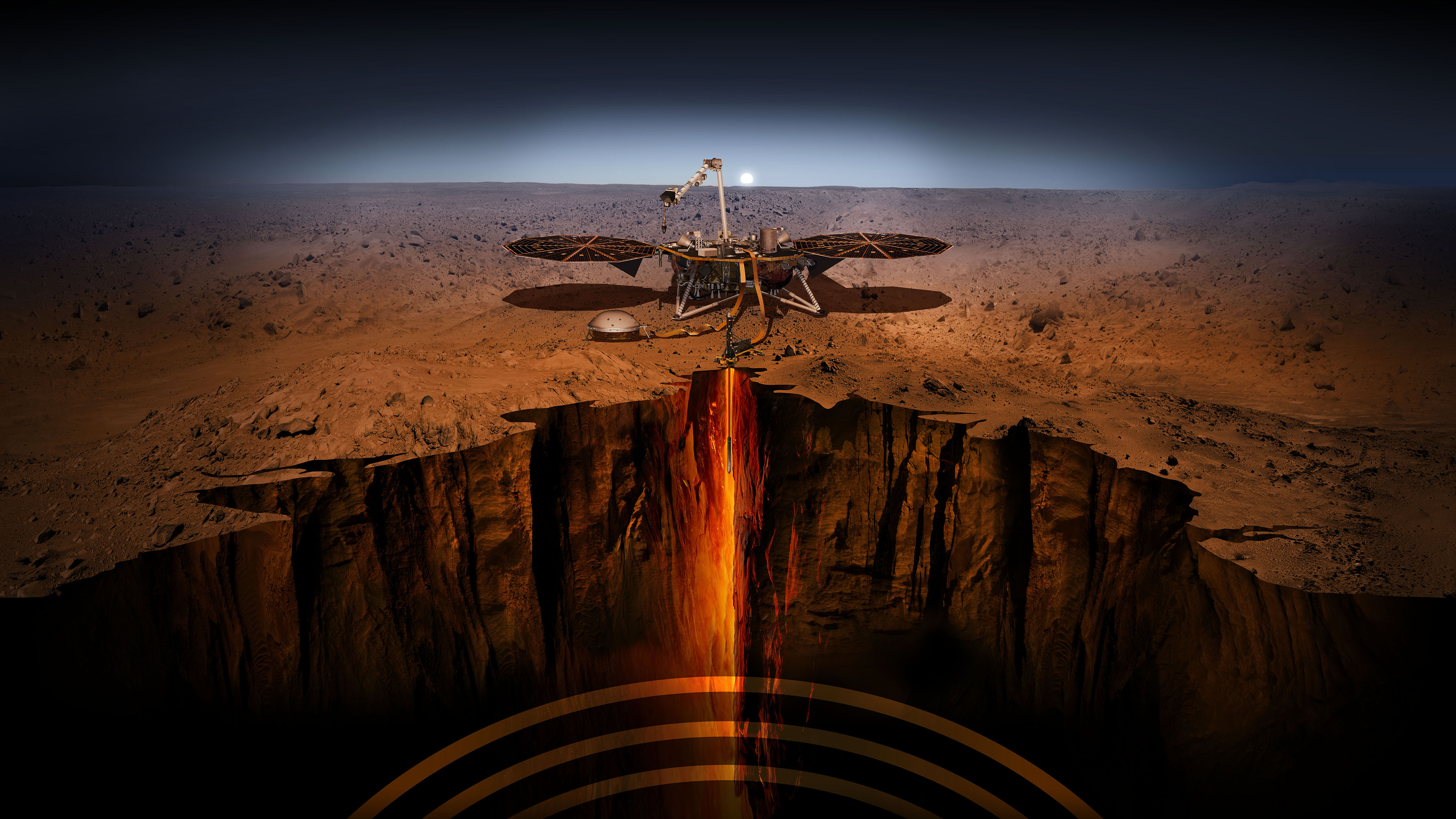Could Life on Mars Be Lurking Deep Underground?

WASHINGTON — To find life on Mars, scientists may need to give up surface exploration and "go deep."
Typically, Mars missions searching for signs of life target the planet's surface, at sites where there are signs of ancient water (a reliable indicator of where life is found on Earth). But while no life has turned up yet on Mars' surface, there may be an abundance of microbial Martians congregating underground, according to research presented Dec. 11 here at the annual meeting of the American Geophysical Union (AGU).
In recent decades, explorations underground on Earth have revealed the so-called deep biosphere — a subsurface environment teeming with microorganisms. And scientists suspect that a similarly biologically-rich zone may be thriving under Mars' surface, too. [Mars-like Places on Earth]
In fact, perhaps there was never an evolutionary push to inhabit the surface of Mars at all, Joseph Michalski, an associate professor with the Department of Earth Sciences at the University of Hong Kong, said at the presentation. The expectation that life evolved on the Martian surface may reflect a bias established by what we know about life on our home planet, Michalski said.
Billions of years ago, when the planets in our solar system were young, the surface of Mars was likely quite similar to that of Earth, its rocky neighbor. That changed when Mars lost its magnetic field, which exposed it to bombardment from intense radiation that would have made survival aboveground extremely challenging, Michalski told Live Science.
However, it's possible that life was already "cooking" on Mars before that happened. Scientists think life first appeared on Earth about 3.8 billion to 3.9 billion years ago, when conditions in some spots likely resembled today’s hydrothermal environments — much like Mars at the time. Perhaps, life arose on Mars at the same time that it was taking shape on Earth, but adapted exclusively to life underground, Michalski said.
"Life could have emerged in those hydrothermal settings and survived in the subsurface for quite a long time," he said.
Sign up for the Live Science daily newsletter now
Get the world’s most fascinating discoveries delivered straight to your inbox.
And if Earth's deep biosphere is any indication, the underground Martian microbial communities could be exceptionally rich and diverse. Earth's deep biosphere was first discovered only about 30 years ago, and estimates since then have suggested that those deep-dwelling microorganisms make up nearly half of all life on the planet, Michalski told Live Science.
Microbes in Earth's deep biosphere play a role in burying carbon that could otherwise become a greenhouse gas, are linked to deep energy resources "and are important for understanding the origins and evolution of life," Michalski said.
"We're at a point now where it's truly a frontier of understanding what 'deep biosphere' truly means on Earth, and how that relates to exoplanets and other planets in our solar system," he said. "It's a window into our own origins."
Mars' subsurface is an especially promising place to start looking for extraterrestrial microbes because it's "even more habitable" for microorganisms than Earth's deep biosphere. Subsurface rock on Mars is more porous than on Earth — creating pockets for nutrients and gas exchange — and Mars' cooler core (though still molten) provides a more hospitable temperature for microbes living in deep rock, Michalski added.
"We could have single-celled organisms that could be dormant for a long time, but could survive through metabolizing hydrogen, methane, potentially sulfur," Michalski told Live Science. "Without being too specific, we think there are a lot of possibilities."
- 13 Ways to Hunt Intelligent Aliens
- 9 Strange, Scientific Excuses for Why Humans Haven't Found Aliens
- The 10 Strangest Places Where Life Is Found on Earth
Original article on Live Science.

Mindy Weisberger is an editor at Scholastic and a former Live Science channel editor and senior writer. She has reported on general science, covering climate change, paleontology, biology and space. Mindy studied film at Columbia University; prior to Live Science she produced, wrote and directed media for the American Museum of Natural History in New York City. Her videos about dinosaurs, astrophysics, biodiversity and evolution appear in museums and science centers worldwide, earning awards such as the CINE Golden Eagle and the Communicator Award of Excellence. Her writing has also appeared in Scientific American, The Washington Post and How It Works Magazine. Her book "Rise of the Zombie Bugs: The Surprising Science of Parasitic Mind Control" will be published in spring 2025 by Johns Hopkins University Press.










